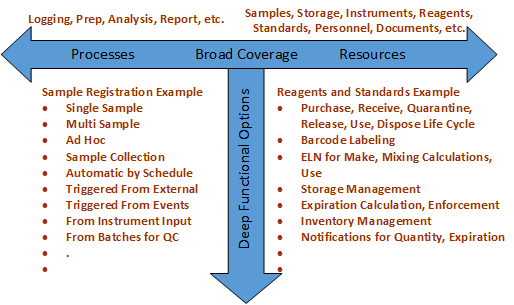A LIMS (Laboratory Information Management System) is advanced software designed to automate, track, and manage laboratory workflows. It streamlines processes, manages lab resources, and integrates key components of a quality management system, improving both efficiency and productivity.
BlazeLIMS improves lab operations by eliminating manual tasks and reducing errors. It allows lab managers to seamlessly manage samples, data, and resources throughout the entire workflow. By automating every step, BlazeLIMS increases accuracy and makes sure that critical data is tracked and managed properly.










